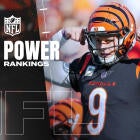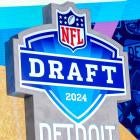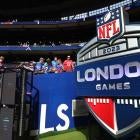In the wake of the Aaron Hernandez arrest in connection with the killing of semi-pro football player Odin Lloyd, a question has come up.
Are NFL players prone to committing more crimes than the general population?
It's a complex question to answer. But that doesn't stop some pundits from trying to come up with half-baked answers.
Geraldo Rivera, speaking recently on Fox News, provided the latest example of this. He said the NFL has a gang culture and "jungle ethos."
"[Hernandez's] got the gang tattoos all over him," Rivera said. "[The killing of Odin Lloyd] wasn't even in the heat of passion. It wasn't a beef over a girlfriend. What it was is, 'You have offended my macho pride. Now I'm going to, y'know, do this kind of, jungle ethos. I'm gonna hunt you down; I'm gonna kill you. How dare you disrespect me.' "
Rivera continued: "I don't know why the league ... doesn't have minders, how the agents who are collecting 10 percent of $40 million ... Where are they in all of this? Why aren't they mentoring these young men ... Ray Lewis and all of the rest. Michael Vick. You can count them. There's a ton of them. They sign them because they're superb athletes and doing nothing to preserve their character and put them on the right road."
Perception has taken the lead over fact in the Hernandez aftermath.
Dr. Mitch Abrams, a clinical sport psychologist specializing in anger management, sexual assault prevention and the treatment of trauma, says without any significant studies on the subject, it cannot be stated that NFL players commit more crimes than the average person.
"We do not have established statistical base rates of violent crime for athletes," Abrams wrote. "We don't have them for professional athletes, and we don't have them for the NFL. Predicting violent crime amongst athletes can be searching for the proverbial needle in the haystack.
"This is not easy to do, but I can tell you that there has yet to be any research that demonstrates that either: a.) athletes are more violent than non-athletes, or b.) when an athlete does commit a violent crime that being an athlete is a causative factor in the crime. The research that points to either assertion is rife with methodological flaws and self-fulfilling prophecies."
In other words, there is no scientific data to show NFL players are more criminally inclined. But there is also no data that shows NFL players are less criminally inclined. There's very little data on the subject, period.
"The problem is that people flashing gang signs and making it rain are not necessarily criminals," said Abrams, "but they glorify thug life."
The league does have some data it likes to share. It cites FBI statistics that show NFL players are arrested at about half the rate of the American general population. The NFL also says that number is even lower when it's related to American men in the range of ages 20-34. The San Diego Union-Tribune tracks arrests of NFL players and states 36 have been arrested this year. It's estimated there have been about 650 NFL players arrested since 2000.
Since you're probably wondering, the NBA, according to media reports, says six of its players have been arrested over the past year. MLB says three of its players have been arrested this year, two for driving under the influence and one for misdemeanor drug possession.
Yet even the FBI statistics regarding the NFL have been questioned. Author Jeff Benedict, who has penned several books on athletes and crimes, says those numbers are apples to oranges.
"The danger of doing comparisons with the general public is," Benedict told National Public Radio, "if you look at these people and their backgrounds, how many of those guys who have been arrested in the FBI numbers have been to college, make a lot of money like NFL players do, and live in safe, good neighborhoods? The issue is why any of these guys are doing this when they have all these good things going on in their lives."
Translation: Unlike NFL players, most of the country doesn't have access to top-notch educations, sizeable bank accounts, live in the best areas and are championed in many cases as heroes.
If the average person had all of those resources, the argument goes, the arrest record of the general population would be less than the NFL's. And if you compared the segment of the population with similar socio-economic attributes, the divide wouldn't be all that glaring.
There's also this fact: Teams have former cops on their security teams.
Those cops have close ties with local law enforcement. The ex-cops can sometimes convince their former law enforcement friends not to arrest a player. This doesn't happen in extreme cases in which players commit major crimes, but it's not uncommon in cases in which lower-level crimes are committed.
Kathy Redmond, president of the National Coalition Against Violent Athletes, has for decades worked extensively with professional sports leagues in seeking to reduce violent crime among athletes. She says the NFL is aware of these security-police relationships that teams have and isn't happy about it.
"The NFL is aware of teams that have protections in place to actively try to hide criminal activity," she said.
The NFL doesn't want criminal activity hidden because it fails to fix the problem, Redmond believes.
An NFL source denied the league had any knowledge of protections in place by teams to cover up criminal activity. If any club did, the source explained, it would be a violation of the NFL's personal conduct policy and would lead to an investigation.
The arrest statistics compiled by the Union-Tribune are themselves, like everything else about this issue, multi-layered. Some of the numbers make sense. Arrests per month, since 2000, peak in February, May, June and begin to drop in July, then steeply decline once the season starts. During the offseason, players have more time to, well, get in trouble. Once the season begins, they have a lot less time to do so.
Others are more curious and have no true explanation. The position that leads the league in arrests since 2000 is defensive backs. The division that's had the most arrests is the AFC West.
Hernandez himself is a walking contradiction. He didn't grow up disadvantaged; he's from a Connecticut suburb, Bristol, which is the home of ESPN and in 2010 was ranked 84th on Money Magazine's "Best Places to Live." He was a high school sports star from a good family. He went to a good public university, Florida, and played for one of the more spit and polished franchises in the New England Patriots.
Several NFL team executives have told CBSSports.com there were warning signs that led to their teams dropping Hernandez significantly on their draft boards, but no one could have predicted his current situation: in jail, accused by prosecutors of committing homicide.
"As much money as we spend on trying to figure players out and predict what they will become," said one general manager, "it's still all guesswork."
It's complicated guesswork.




















